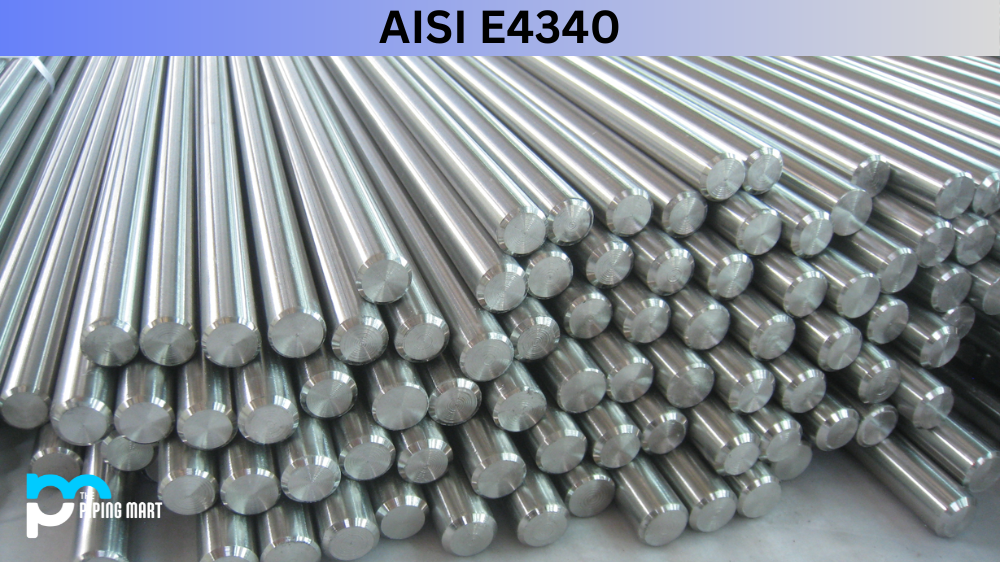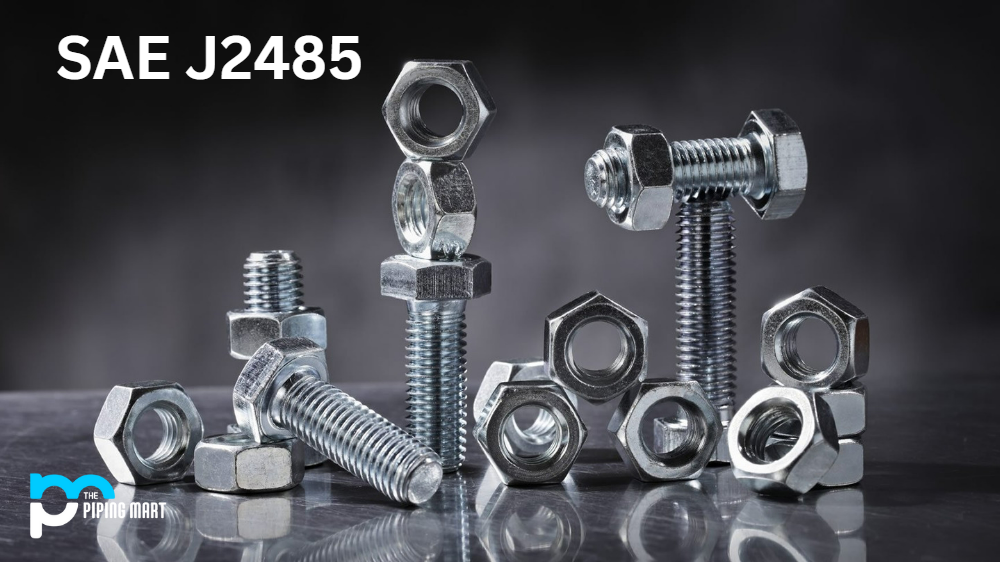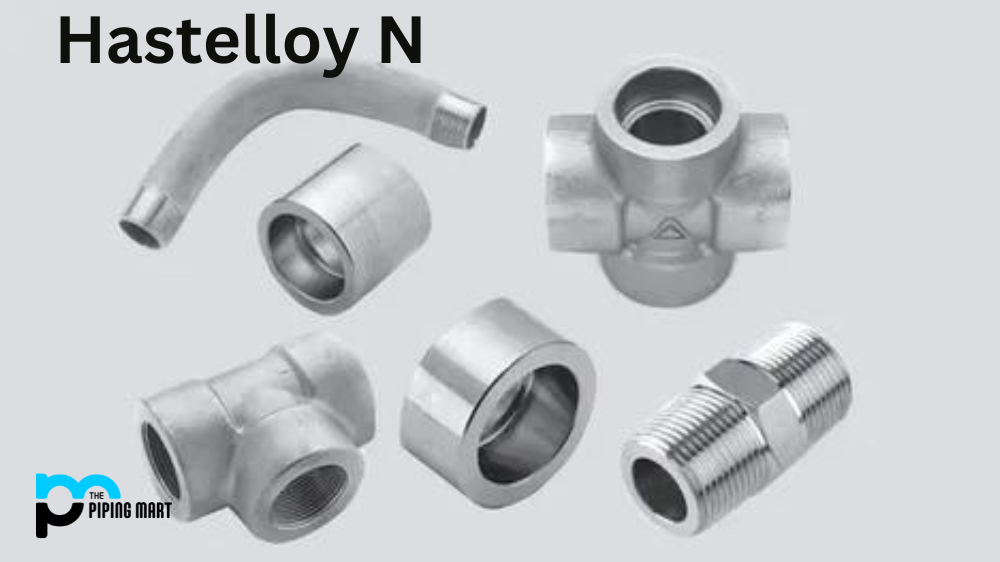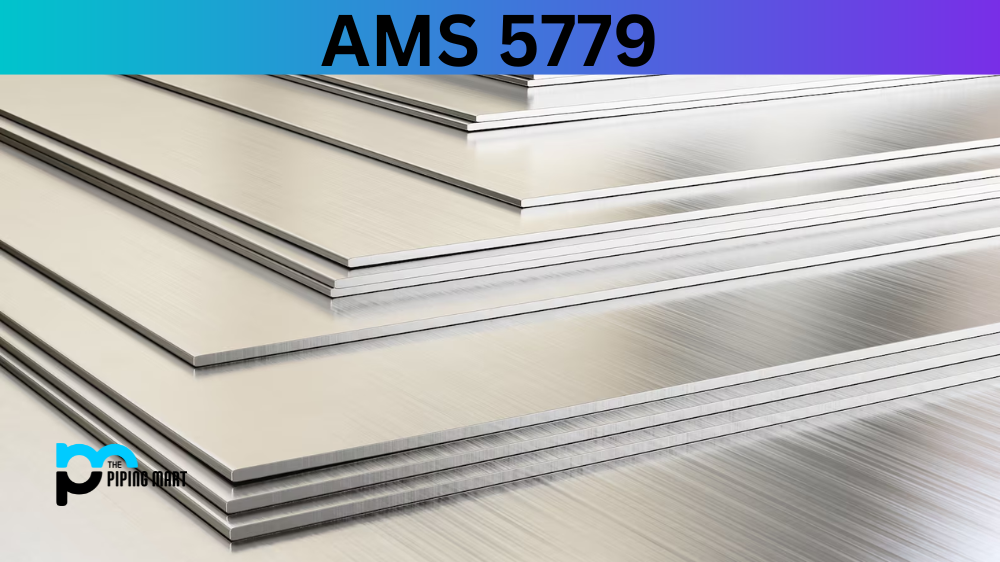This blog post will look closely at AISI E4340, including its composition, mechanical and physical properties, corrosion resistance, heat treatment, machining, and welding.
What is AISI E4340?
AISI E4340, a low-alloy steel known for its strength and toughness, is widely used in various industries, including aerospace, defence, and oil and gas. Its unique combination of properties makes it an ideal choice for critical applications that demand high performance and reliability.
AISI E4340 Composition
AISI E4340 is a low-alloy steel that contains chromium, nickel, and molybdenum. Its chemical composition is as follows: carbon (0.38-0.43%), manganese (0.60-0.80%), phosphorus (0.035% max), sulfur (0.040% max), silicon (0.15-0.35%), chromium (0.70-0.90%), nickel (1.65-2.00%), and molybdenum (0.20-0.30%). These elements combine to give E4340 unique properties, such as high strength, toughness, and fatigue resistance.
| Element | Content (%) |
|---|---|
| Iron, Fe | 95.175-96.27 |
| Nickel, Ni | 1.65-2.00 |
| Chromium, Cr | 0.700-0.900 |
| Manganese, Mn | 0.650-0.850 |
| Carbon, C | 0.380-0.430 |
| Molybdenum, Mo | 0.200-0.300 |
| Silicon, Si | 0.150-0.300 |
| Phosphorous, P | ≤ 0.0250 |
| Sulfur, S | ≤ 0.0200 |
AISI E4340 Mechanical Properties
AISI E4340 has excellent mechanical properties, making it ideal for gears, shafts, and structural components. Its typical mechanical properties are as follows: ultimate tensile strength of 760 MPa, yield strength of 470 MPa, elongation of 22%, and reduction of area of 50%. It also has a high fatigue strength, which is essential for applications subjected to cyclic loading.
| Properties | Metric | Imperial |
|---|---|---|
| Tensile strength | 745 MPa | 108000 psi |
| Yield strength | 470 MPa | 68200 psi |
| Bulk modulus (typical for steel) | 140 GPa | 20300 ksi |
| Shear modulus (typical for steel) | 80.0 GPa | 11600 ksi |
| Elastic modulus | 190-210 GPa | 27557-30458 ksi |
| Poisson’s ratio | 0.27-0.30 | 0.27-0.30 |
| Elongation at break (in 50 mm) | 22.00% | 22.00% |
| Reduction of area | 50.00% | 50.00% |
| Hardness, Brinell | 217 | 217 |
| Hardness, Knoop (converted from Brinell hardness) | 240 | 240 |
| Hardness, Rockwell B (converted from Brinell hardness) | 95 | 95 |
| Hardness, Rockwell C (converted from Brinell hardness, value below normal HRC range, for comparison purposes only) | 17 | 17 |
| Hardness, Vickers (converted from Brinell hardness) | 228 | 228 |
| Machinability (annealed and cold drawn. Based on 100 machinability for AISI 1212 steel) | 50 | 50 |
AISI E4340 Physical Properties
AISI E4340 has a density of 7.85 g/cm3, a thermal conductivity of 42.6 W/mK, and a specific heat capacity of 0.46 J/gK. Its electrical resistivity is 2.15×10-7 Ωm, and its magnetic permeability is 1.002.
AISI E4340 Thermal Properties
| Properties | Metric | Imperial |
|---|---|---|
| Thermal expansion co-efficient (austenitized 870°C (1600°F), 545°C (1010°F) temper for 2 hrs/@ -70-20°C/-94- 68°F) | 11.3 µm/m°C | 6.28 µin/in°F |
| Thermal conductivity (typical steel) | 44.5 W/mK | 309 BTU in/hr.ft².°F |
AISI E4340 Equivalents
| AMS 6415 | ASTM A331 | ASTM A519 | ASTM A752 | ASTM A829 |
| MIL S-5000 | MIL S-83135 | SAE J1397 | SAE J404 | ASTM A304 |
| ASTM A505 | SAE J770 | MIL SPEC MIL-S-5000 |
AISI E4340 Uses
AISI E4340 is used in many critical applications that demand high strength, toughness, and fatigue resistance. Some common applications include aircraft landing gear, gears, shafts, and structural components in the aerospace and defence industries. Due to its excellent resistance to fatigue and wear, it is also used in oil and gas applications, such as drill collars and mud motor components.
AISI E4340 Corrosion Resistance
AISI E4340 has moderate corrosion resistance and can be easily protected with proper coatings or surface treatments. It is not recommended in highly corrosive environments, such as seawater or acidic solutions.
AISI E4340 Heat Treatment
AISI E4340 can be heat-treated to achieve different mechanical properties, depending on the application requirements. It is typically quenched and tempered to achieve a hardness of 217-248 HB, which gives it high strength and toughness. It can also be nitrided to increase its surface hardness and wear resistance.
AISI E4340 Machining
AISI E4340 can be machined using conventional methods, but it requires careful preparation and tool selection due to its high hardness and toughness. Carbide tools with high cutting speeds and feed rates are recommended.
AISI E4340 Welding
AISI E4340 can be welded using different methods, such as gas tungsten arc welding (GTAW), gas metal arc welding (GMAW), and shielded metal arc welding (SMAW). However, preheating and post-weld heat treatment is required to avoid cracking and achieve good-quality welds.
Conclusion:
AISI E4340 is a low-alloy steel known for its high strength, toughness, and fatigue resistance. Its unique properties make it ideal for critical aerospace, defence, and oil and gas applications. It is essential to ensure proper use and performance to understand its composition, mechanical and physical properties, corrosion resistance, heat treatment, machining, and welding. If you’re looking for a reliable and high-performance material for your application, AISI E4340 could be an excellent option.

Meet Bhavesh, a seasoned blogger with a wealth of knowledge and experience. From metal products manufacturing to retail, Bhavesh has a diverse background in various industries and is dedicated to sharing his insights and expertise with readers.




